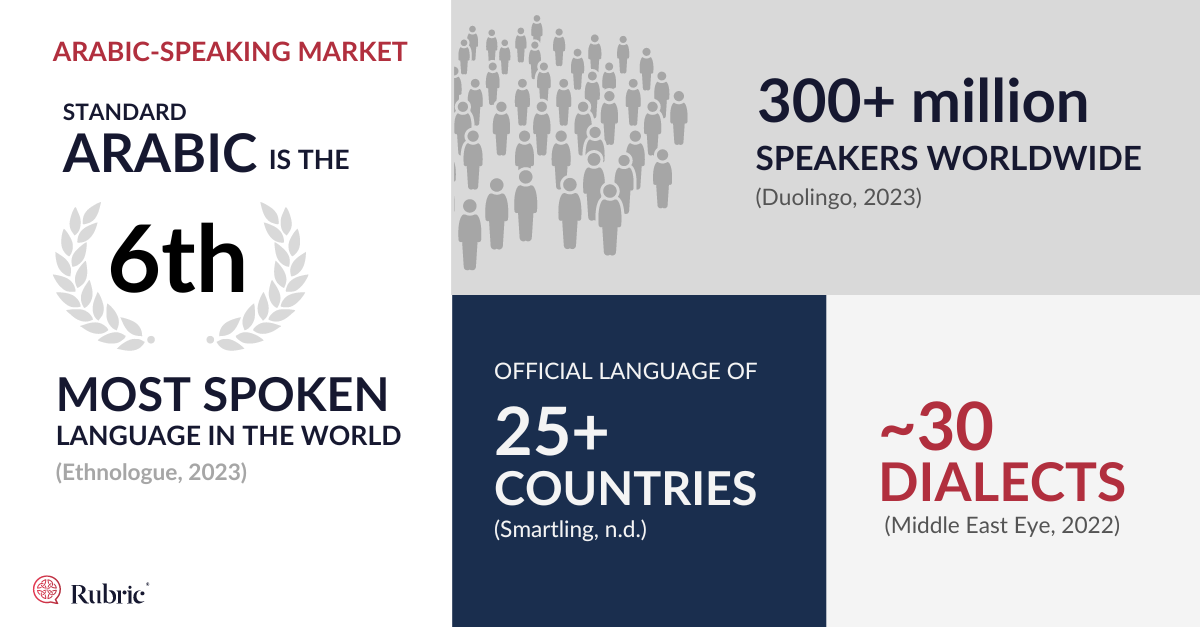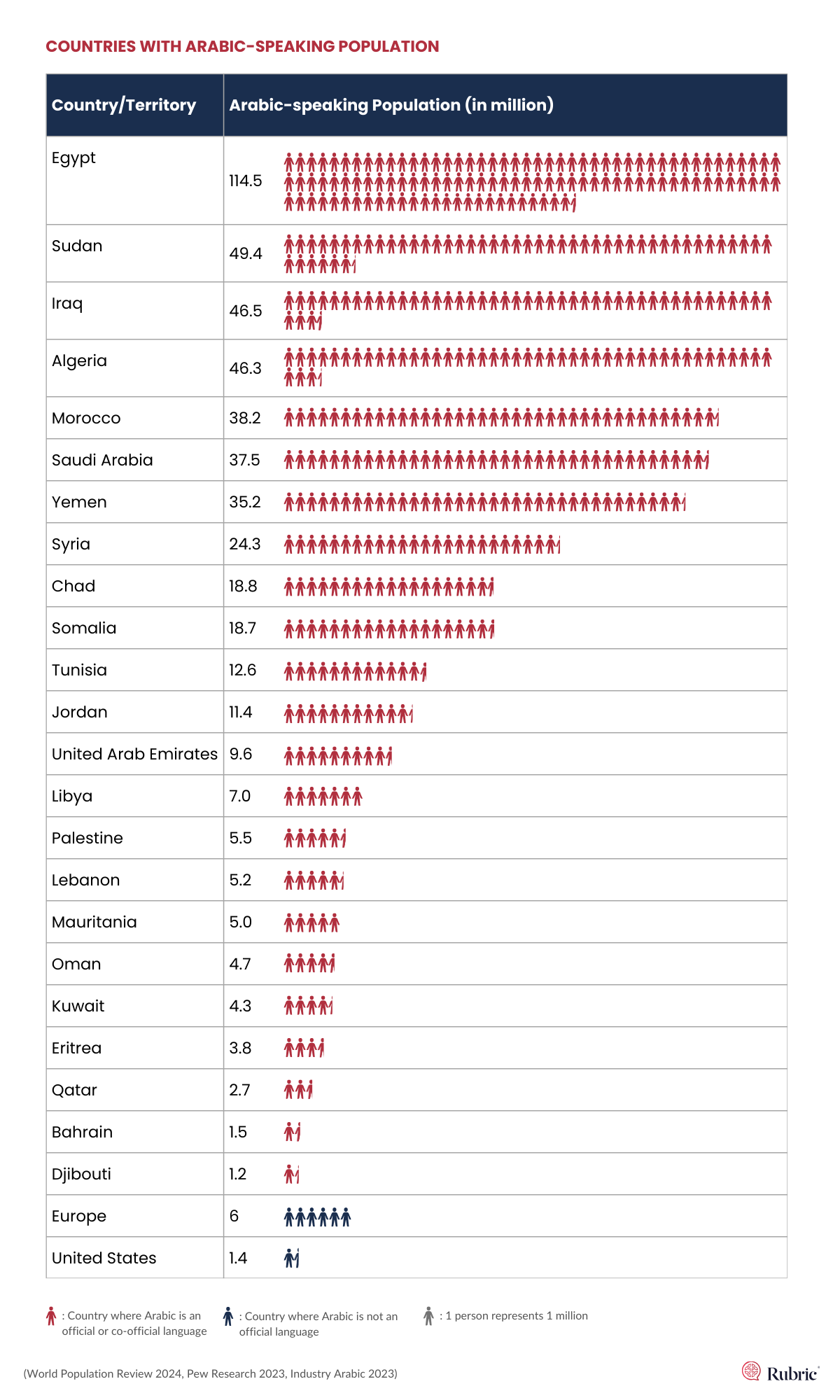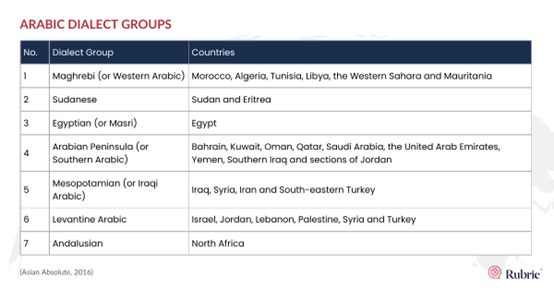
Arabic is the 6th most spoken language in the world with over 300 million speakers.

As the main language in the Middle East, Arabian Peninsula, and North Africa, Arabic is an important language from a global business standpoint.

Arabic isn’t just a language though. The term “Arabic” can also be used to refer to the writing system (or script). After the Latin script (dominant in the Americas, Oceania, Western and Central Europe and much of sub-Saharan Africa) the Arabic script is the second-most widely used writing system in the world.
Right-to-left
The Arabic script looks very different to the Latin script English-speakers are familiar with.
It is a cursive script, written with many or all letters in a word connected in a single pen stroke. Many letters are also written in varying forms depending how they are used.
The most eye-catching difference however is that Arabic, like Hebrew and Farsi, is written and read from right-to-left (RTL). Arabic books, from an English-speaker’s perspective, are therefore read “back to front”.
Support for right-to-left languages must be considered when designing content to ensure that visual elements allow for both left-to-right and right-to-left languages. This is referred to as “bi-directional” (or “bi-di”) support. You can learn more about this topic at https://www.linkedin.com/pulse/ux-best-practices-bi-directional-languages-gilad-almosnino/ and https://www.youtube.com/watch?v=OCQd02hORJQ
Arabic dialects
Linguistically, Arabic is known as a macrolanguage with nearly 30 recognised dialects. These 30 Arabic dialects can be categorized into 7 dialect groups:

These dialect groups have variations in vocabulary, using different words to describe the same thing. For example, ‘money’ is known by different words in Gulf Arabic and Levantine Arabic.
Arabic dialects can also vary in word structures, use of tenses, or even have special features unique to a specific dialect.
Written Arabic
The written and spoken forms of Arabic are quite different. The written form has a standardized version known as Modern Standard Arabic (MSA) or Standard Arabic. It is formal and is used for official documents, news, and literature. Egypt has largely adopted MSA and given that Egypt is the most populous Arabic-speaking country, MSA dominates written Arabic.
As a result, despite Arabic’s many dialects, Modern Standard Arabic (MSA) is the default choice for most global businesses and is used across the Arabic-speaking world for written communications.
Spoken Arabic
Spoken Arabic however is a very different story. Whilst the written form is formal, spoken Arabic is informal, colloquial, and varies significantly in vocabulary, grammar, accent and tone between countries and regions.
If your corporate communication comprises spoken content in Audio, Video or eLearning then it’s vital it is given the appropriate regional flavor.
Selecting the right voice-over artists with regional accents and exposure to regional dialects is vital to ensure that the communication is audience-appropriate. Read more on this topic in our blog localizing video for global markets.
Other considerations
The grammar structures of Arabic and English vary greatly. There may be words and expressions in Arabic that do not have equivalents in English.
Apart from verbal and written communication, non-verbal communication varies significantly between English and Arabic cultures. This should be considered when creating content, but also when visiting Arabic-speaking countries in-person. Learn about the nuanced meanings of gestures, body language, and facial expressions to help prevent miscommunication.
The dos and don’ts of each region will decide what can and cannot be communicated to an Arabic-speaking audience. Industry-specific laws, religious and cultural sensitivities, and cultural norms need to be considered.